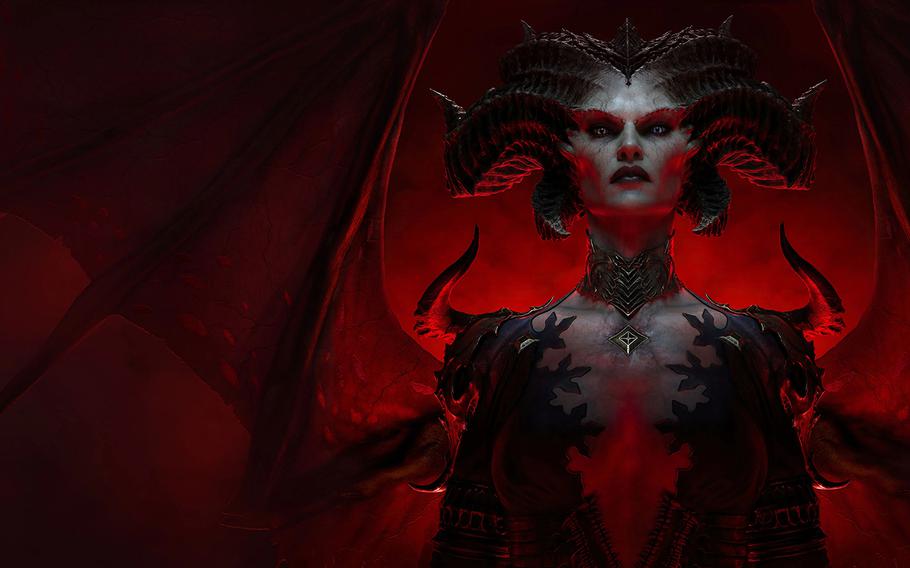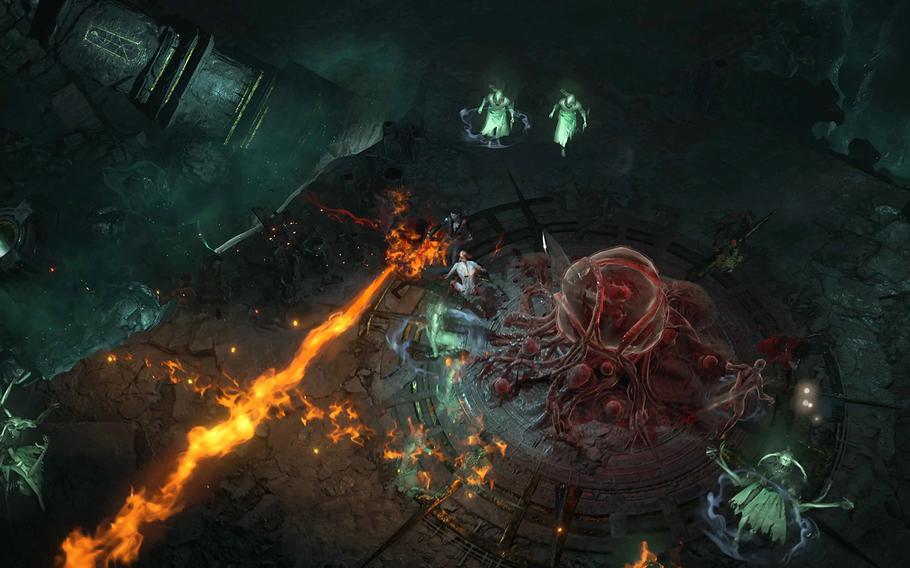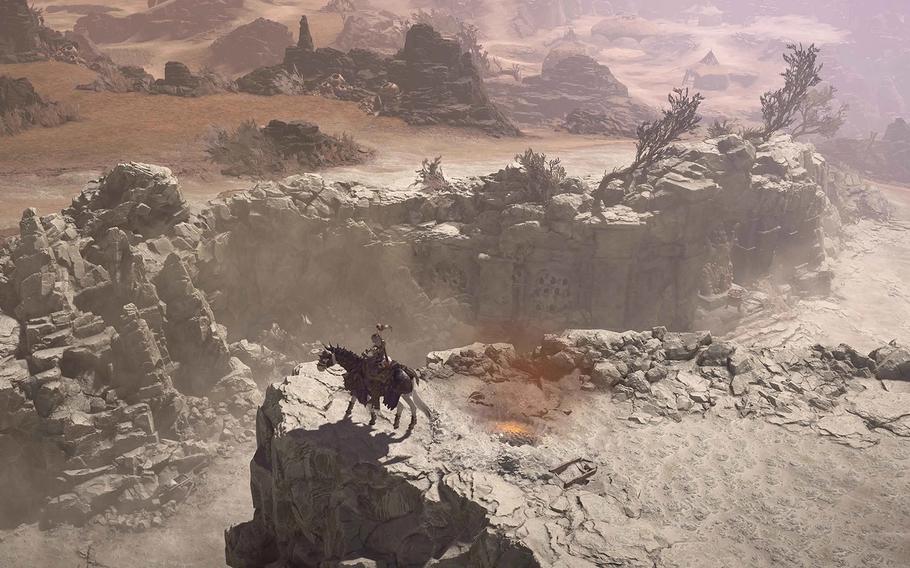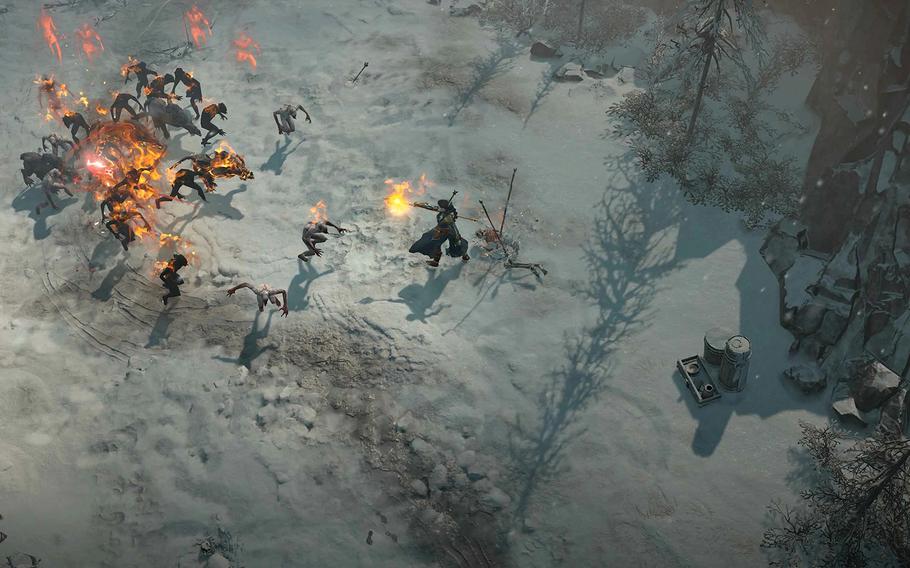
With the introduction of Lilith in Diablo IV, the franchise has a villain who is more intriguing and far more nuanced than any before it. (Blizzard Entertainment)
No one ever finishes a video game anymore. The way projects are made and planned out, players can never be really done with an adventure. Games, especially those made by Blizzard, are entities that change and evolve over time. You don’t complete Blizzard games, you live with them for however long the content interests you or your wallet allows.
That’s what fans will face with Diablo IV. It’s an enormous game that takes the franchise’s signature hack-and-slash dungeon dives and envisions them in an open world. The Sanctuary that players step into is expansive and traveling through it is seamless as players explore the continent through the campaign’s six chapters.
THE STORY SO FAR …
In a way, this entry is almost like a reboot. It starts 50 years after the explosive finale of Diablo III, and in a way, it serves as a clean slate telling a new chapter, one in which the title villain takes back seat to the new big bad — Lilith, the daughter of Mephisto, the Lord of Hatred. She and the angel Inarius created humans and the world of Sanctuary as a way to escape the Eternal Conflict between angels and demons.
Now after the events of Diablo III, humankind has descended into a dark age, and Lilith has somehow returned from her banishment. What follows is a campaign to stop her and her minions from upending the world and harming humanity’s survivors. Players take on the role of the Wanderer who is drawn into this conflict.
Players create their own character and choose his or her class from the five available. They can be a necromancer, rogue, sorcerer, barbarian or druid. They each have their distinct playstyles and Blizzard did a great job at crafting classes that have versatility. When in a group, they each have their own role. Barbarians are great at drawing enemy attacks with their high defense and health while Sorcerers deal massive damage, but they’re rather frail.

A Rogue defeats an enemy in Diablo IV. (Blizzard Entertainment)
AN ADDICTIVE GAMEPLAY LOOP
Diablo IV is a game that begs players to explore not only the realm of Sanctuary but also what these characters can do. Part of the fun in the campaign is choosing a class and figuring out how to level it up so that it excels and defeats swarms of enemies.
It’s part of the core gameplay loop of the campaign. Players take on missions and dive into dungeons and clear them. That gives them gear, and players pick and choose the equipment that makes them more powerful before selling or breaking it down. With a new powered-up hero, they fight Lilith’s army again in hopes of getting even better gear.
The franchise has built its reputation on this addictive loop and giving players a masterful campaign with dungeons that are procedurally generated so that no two runs are alike.

The world of Diablo IV is so large that players will need a mount to help traverse it. (Blizzard Entertainment)
A DOLLOP OF WORLD OF WARCRAFT
Diablo IV expands on that concept by bringing elements of another successful Blizzard title, World of Warcraft, into the fold. In Diablo IV, players can see and interact with other human-controlled protagonists as they go through their adventure. That makes the game feel more alive as they see they’re not alone in fighting the forces of hell. They’ll stumble upon dynamic world events that others can participate in. They can liberate Strongholds to create player-friendly waypoints in the enormous world.
To help them traverse it, players will need mounts, which come a little more than halfway through the campaign. Before then, plays must \open up waypoints that enable them to fast-travel to areas in Sanctuary’s five biomes. Even though the perspective is still overhead and isometric giving players a broad view, the world of Diablo IV still seems vast.
With more than 120 dungeons to explore, the game has plenty of content to keep players busy, but the developers also created a reward system that encourages people to venture into the unknown and battle monsters. Yes, the gameplay can be repetitive, but it’s the way Blizzard microdoses players with feelings of advancement through gear and leveling that will keep them engaged.
The quest lines have good storytelling, and at times, they cover foreboding subject matter that befits the dark fantasy that Blizzard originally crafted. When Diablo IV is at its best, the mission’s narrative pushes the action along with the game’s real driving force — the rewards be it gear, experience points or legendary aspects aka perks that can be attached to equipment.
LILITH IS THE REAL MVP
Meanwhile, the main campaign itself is great but unevenly paced. The driving force of the narrative is Lilith herself, who is a force of motherly nature. The daughter of Hatred is a remarkable villain and the first one really worth writing about in the franchise. Much of that has to do with her motives.
Although everyone says she’s evil and will lead to the Sanctuary’s destruction, she’s written in a way that raises doubts about who the bad guy really is. Voice actor Caroline Faber backs that up with a performance that’s equally menacing and tender in places. She creates an intriguing ambiguity that sets up the franchise for the future.

Players will face swarms of monsters in Diablo IV. (Blizzard Entertainment)
A CAMPAIGN THAT KEEPS ON GOING
The developers have learned from such missteps as creating a real-money auction house in Diablo III, Instead, Diablo IV doubled down on the way players can craft their protagonists to make them more powerful in order to take on more difficult challenges.
After beating a campaign that drags on a little too much with the boss fights in the final chapter, players will encounter an endgame that will demand more from them with designated player vs. player zones that’s reminiscent of the Dark Zone in Tom Clancy’s The Division. They’ll also encounter Capstone and Nightmare dungeons that will test players’ skills. They can also face World Bosses, which offer opportunities to show off their skill and gear to other players.
In addition, Blizzard made Diablo IV with an eye toward seasonal content. With battle passes that have paid tiers, players will make a seasonal character to explore some of the tweaks that the developer creates. It’s free to all, but the paid tier will feature cosmetic items, so players who spend the most money won’t necessarily be the most powerful.
Again, all of this is to create an experience that lives on after the credits roll. Diablo IV isn’t necessarily a finished game. It’s one that Blizzard expects to live on long after its launch, and it probably will.
Platforms: Xbox Series X and Series S, Xbox One, PC, PlayStation 5, PlayStation 4
Online: diablo4.blizzard.com/en-us